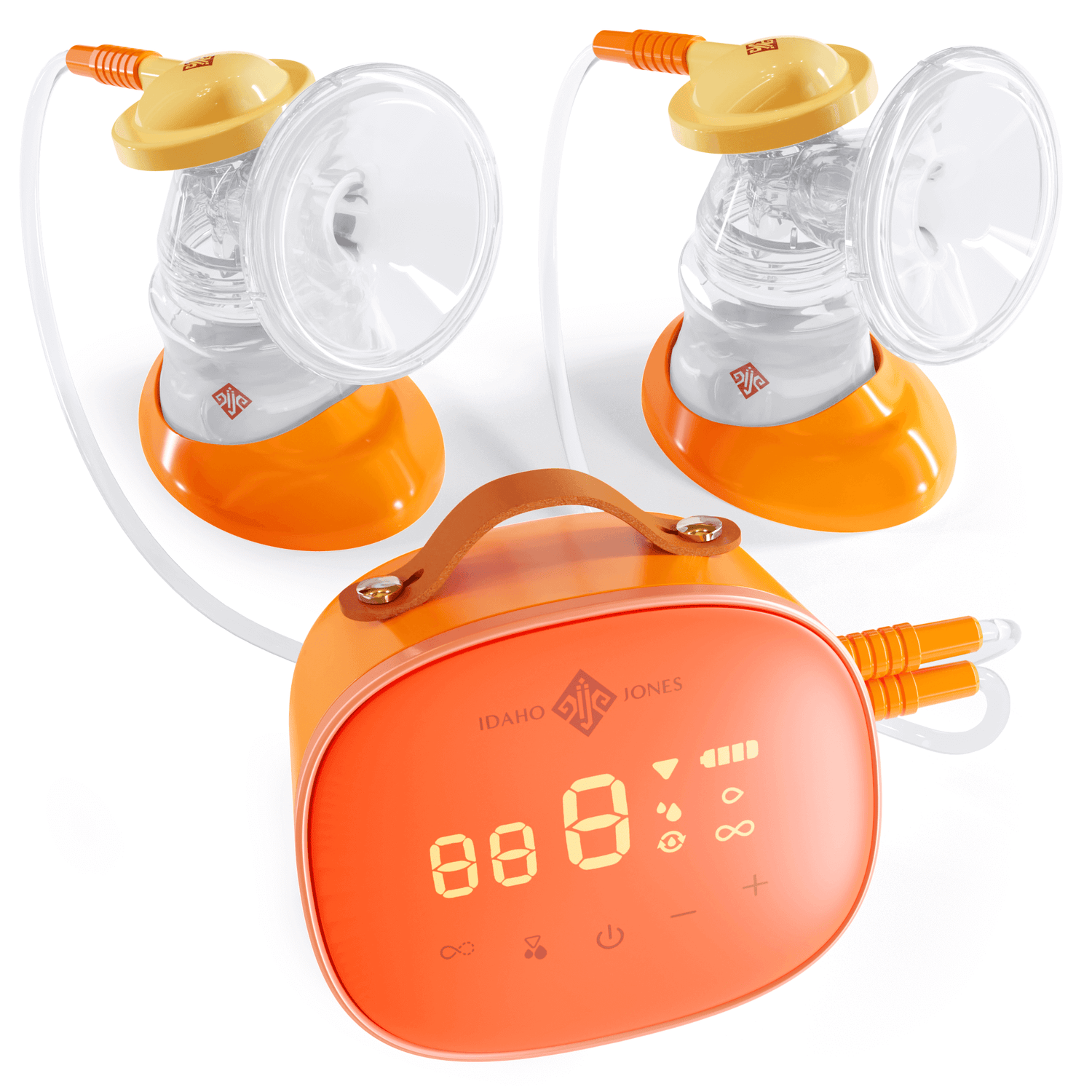Breastfeeding numerous times per day (and night!) can be hard on your body. Finding comfortable positions can help both you and your baby (or babies) get the most out of your time spent nursing. In this post, we’ll cover some positioning basics, as well as some commonly suggested breastfeeding positions. Your comfort is key, so if something isn’t working for you, change it; if something feels great but isn’t on this list, keep on doing what feels right in your body.
Positioning Basics
Whether you breastfeed your baby for weeks, months, or years, the time spent doing so can be full of sore muscles, an achy back, tired arms, and other physical discomforts. Paying mind to your positioning while breastfeeding can make the experience more enjoyable and sustainable. When you breastfeed, focus on your own body first. Follow these tips to ensure a comfortable breastfeeding position:
- Pick a comfy spot. If possible, choose the more comfortable chair or surface. Grab a few pillows on your way to sit down, or ask someone to get them for you. While there might be times when you need to feed on the go or in a setup that lacks support, don’t underestimate the power of choosing a relaxing place to do the majority of your breastfeeding.
- Bring baby to you (not the other way around). Especially when your little one is fussy, it’s tempting to stretch or reach as far as you need to, getting your breast to their mouth as fast as possible. However, this can get you into a precarious or painful position, so—if you can—take that extra moment to sit or lay back and bring your baby to your body rather than going to them. You can also think of this as having your baby at nipple height. If you need extra pillows or support to bring your baby to the breast you can use a special breastfeeding pillow (the My Breast Friend is a popular choice) or a bed/couch pillow, blanket, or rolled towel.
- Relax your shoulders, neck, jaw, and face. Especially if breastfeeding is feeling new or stressful, it’s easy to hold that tension in your body. As you settle into a breastfeeding session, take a moment to drop your shoulders, roll your neck, loosen your jaw, relax your facial muscles.
- Hold baby tummy to tummy. No matter what position you’re in—whether it’s one shown in every breastfeeding book or one that your wiggly baby makes up on the spot—try to turn their belly towards yours. This helps them get into an optimal position that’s comfortable for both of you.
- Make space for baby to open wide. Another key to a comfortable breastfeeding session is a deep latch. To do this, your baby needs to open their mouth wide, so that your nipple isn’t pinched against their hard palate while nursing. Avoid a hand on the back of your baby’s head (instead support the neck if needed), or a position that makes it difficult for them to open wide.
With these basics in mind, you can create your own comfortable breastfeeding positions. Finding what works best for your body and your baby is generally going to be more successful than trying to exactly copy an “official” breastfeeding position. However, sometimes it can be helpful to have a little more guidance, so if you’re wanting to learn or try other positions, here are some of the commonly recommended breastfeeding positions.
Commonly Suggested Breastfeeding Positions
The Cradle Hold
The cradle-hold is maybe the most commonly shown breastfeeding position, but not necessarily the most comfortable or easiest. When in a cradle position, you hold your baby in the same arm as the breast they latch onto. Their head rests in the crook of your elbow and your opposite hand is free to help baby latch, grab a glass of water, scroll your phone, or do anything else you need. This hold doesn’t give you maximum control, so it’s often easier with older newborns and babies.
The Cross-cradle Hold
The cross-cradle hold can be an easier variation of the cradle position, especially during the first weeks of your baby’s life and your breastfeeding relationship. In this position, you hold your baby with the opposite arm to the breast you’re going to feed on. For example, if you are feeding on the left breast, you can support baby’s neck with your right hand and hold their body against your right arm. This hold can be helpful if you have large breasts, are having latch issues, or need a free hand to position your breast for any reason.
The Football (or Rugby) Hold
The football hold (or rugby, depending on where you are in the world) can be great for newborns, especially if you’ve had a cesarean birth. For this position, you hold baby in one arm, and bring them to that same breast, with their body laying along your side (tummy towards your body). So if you’re feeding on the left breast, your left hand and arm would support your baby’s neck and spine, with their belly resting against your left side. If you’ve had a cesarean birth, this keeps your baby off of your incision. It can also be a great position if you have a forceful letdown, because your baby can handle the strong flow more easily.
The Side-lying Position
This comfortable position can offer extra rest and relaxation during a breastfeeding session, because you’re lying down next to your baby. For the side-lying position, you will lay on your side, and can rest your head on a pillow and put something between your knees for maximum comfort. Your baby will face you, belly to belly, and will likely be most comfortable and able to transfer milk if their ear, shoulder, and hip form a straight line. If you expect to fall asleep with your baby, be sure that you’re on a safe sleep surface or that someone else is awake and watching you. For more research on sleeping next to your baby, see the Academy of Breastfeeding Medicine’s bedsharing and breastfeeding protocol.
The Laid-back Position
Another comfortable, reclined option, the laid-back position is ideal for moms with oversupply or a heavy letdown. With this position, gravity helps slow the flow of milk so that your baby can eat more easily. This breastfeeding technique is also sometimes called “biological nurturing,” as it encourages your baby’s natural breastfeeding instincts. A 2008 study found that biological nurturing supports infant reflexes that allow for the optimal transfer of milk. For this position, lean back in a comfortable position on a couch, bed, or arm chair, with your feet stretched out in front of you, also on a supported surface. You can bring your baby to you, belly to belly, and let them find a comfortable latch laying against your body.
The Koala Position
Also known as the upright position, this breastfeeding posture is great for older babies who can sit up easily, but can also be comfortable with newborns if they have proper support. For the koala position, let your baby sit in your lap, facing you, with their legs on either side of your thigh. Hug them in close to your body, making sure they have room to open wide and latch on deeply. This position can be especially good for babies with reflux or an ear infection, as well as infants with a tongue-tie or low muscle tone.
The Dangle Feed
Probably not the way you want to breastfeed every time, the dangle feed definitely has its place. For this breastfeeding position, you can lay your baby on their back and lean over them—perhaps on all fours or supported by pillows or other supports—and let the latch while your breast dangles. Some moms try this pose when their baby is struggling to latch, and it’s also been said to help with clogged ducts or mastitis.
The Babycarrier Feed
Another comfortable way to feed your baby, especially on the go, can be in a baby carrier. The specifics of this breastfeeding position will vary based on the carrier that you’re using, but the gist is that you can loosen the sling, wrap, or carrier (making sure your baby is still secure) and help them latch on to your breast. If you’re looking for examples of breastfeeding while using a certain carrier, try searching for “breastfeeding in [your carrier].”
The Dancer Hold
While this is not a full-body breastfeeding position, the Dancer hold is a way of supporting your baby’s cheeks so that they can nurse more effectively. Great for infants with low muscle tone, perhaps because they were born at or near term, as well as babies with Down’s Syndrome, the Dancer hold allows you to gently hold your baby’s cheeks as they breastfeed to support a deep and lasting latch. Place your hand in a “U” shape underneath your breast, and slide your hand forward, so that the edge of your palm is supporting your breast and you can use your fingers to apply gentle pressure to your baby’s cheeks.
The Double Holds
If you have twins, you may be curious about how you’ll manage to feed them at the same time. Twin breastfeeding positions, like all nursing positions, will vary based on you and your babies sizes, preferences, and anatomy. Many of the positions described above can work in a “double” version, particularly the cradle and football holds. Some twin parents also prefer to use a twin breastfeeding pillow, such as the My Breast Friend Twin Breastfeeding Pillow.
No matter how you feed your baby, expect that it will vary based on your environment and mood, as well as theirs, and will likely continue to change as they grow and you both learn to breastfeed. Prioritizing your physical comfort as you choose a breastfeeding position can help protect your physical health—and make the process more enjoyable—as you spend (lots of!) time breastfeeding your little one(s).



